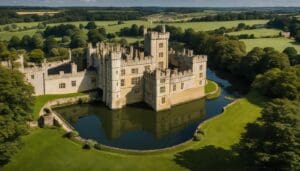All About the Wonderful Vatican City: Smallest Country in Europe
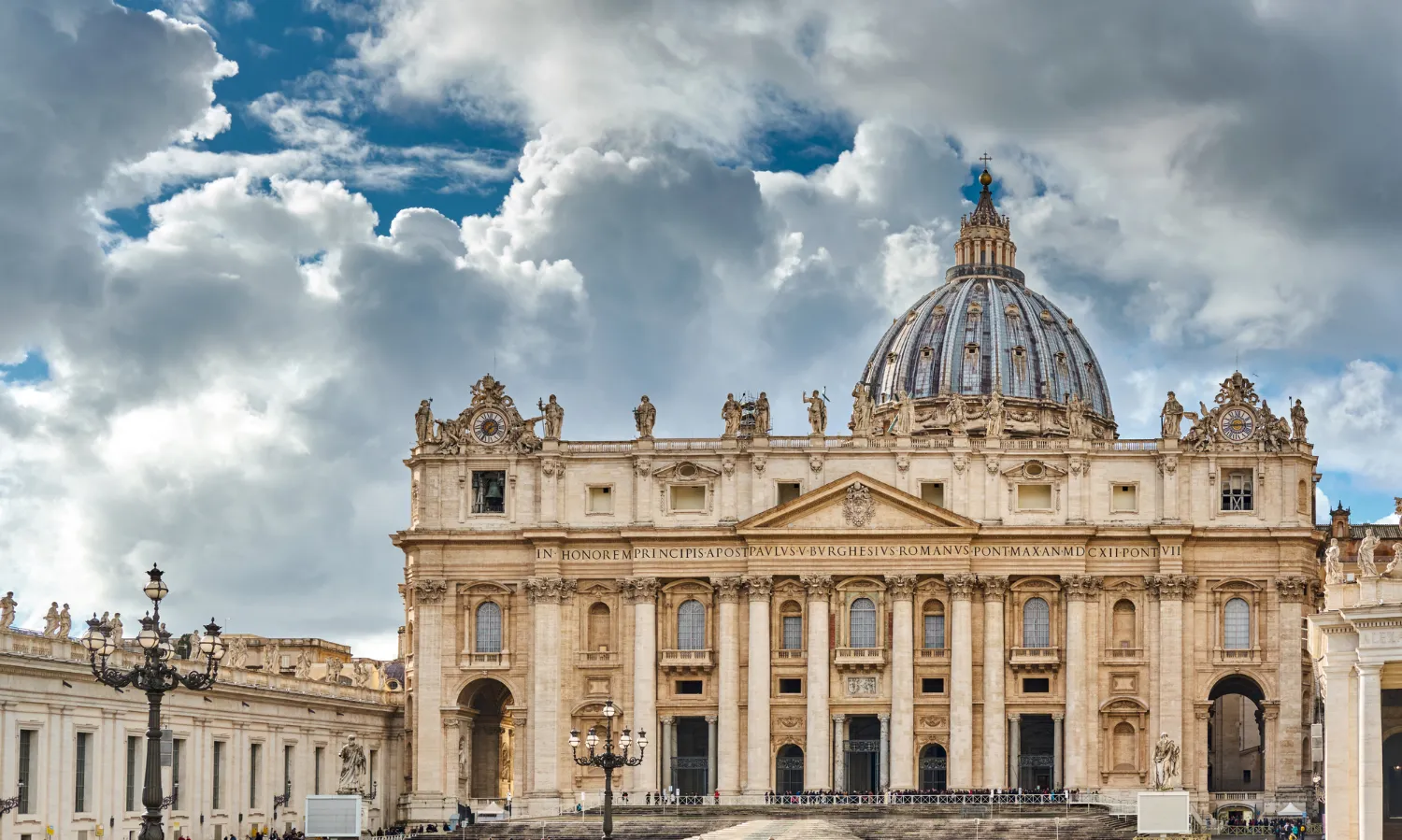
Updated On: November 08, 2023 by Ahmed Samir
The Vatican is the smallest country in Europe, with an area of 0.49 km2. It is also the smallest in terms of population, estimated at (800) in 2019.
It is an independent state and a landlocked European country surrounded by Italy, lying close to the Tiber River, on Vatican Hill, in the centre of Rome.
The country is surrounded by medieval walls, except in the southeastern part of Piazza San Pietro. It has six entrances, three of which are open to the public: the entrance to the Bell Arch, St. Peter’s Square, and the Vatican Museums and Galleries.
Language in the Vatican
The Vatican has no official language. Although the Holy See‘s official language is Latin, many languages are spoken there, including German, English, Spanish, Portuguese, Polish, and French.
History of Vatican City
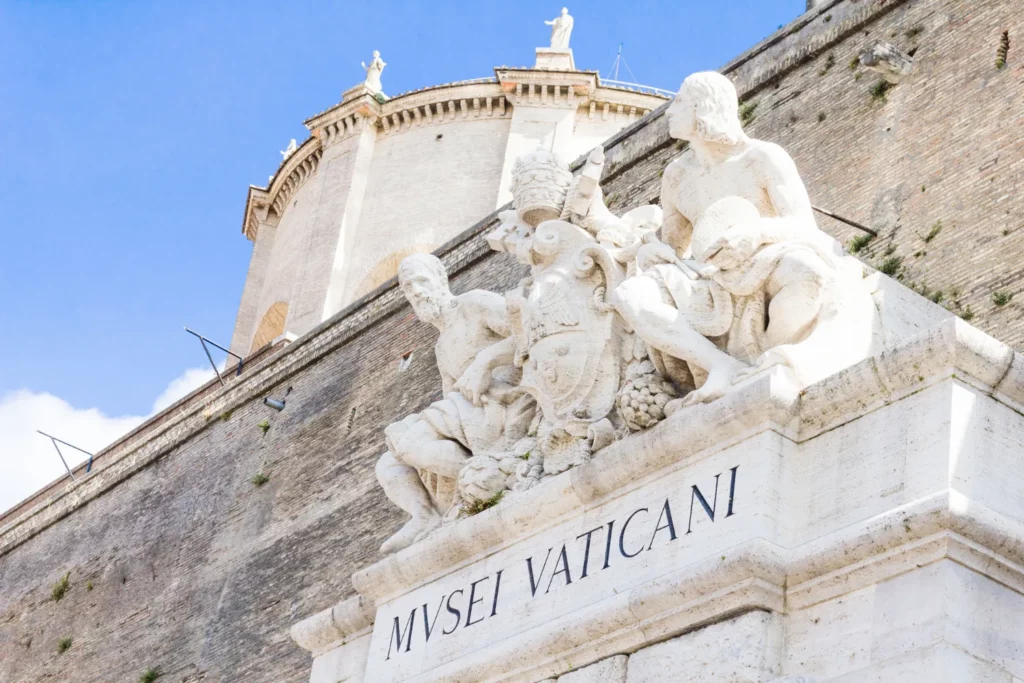
The Vatican is a sacred place in the Christian religion, bearing witness to a great history. It contains a unique collection of masterpieces of art and architecture.
After Rome burned in 64 AD, Emperor Nero executed St. Peter and a group of Christians as scapegoats and accused them of starting the fires. The execution occurred in Vatican Heights, and they were buried in a cemetery there.
In 324, a church was built over the tomb of St. Peter, turning it into a pilgrimage centre for Christians. This led to the centring and development of Christian clergy homes around the church.
In 846, Pope Leo IV ordered the construction of a wall to protect the Holy Precinct, about 39 feet long.
The wall surrounded the city of Leonine, which is the area that includes the current Vatican and the Borgo region. This wall was constantly expanded until the era of Pope Urban VIII in the forties of the seventeenth century.
The popes retained absolute power over the territories of the Vatican, known as the Papal States, until 1870, when the unified Italian state emerged and took control of all the papal lands outside the walls of the Vatican. The new state tried to impose its authority on the Vatican, and the confrontation between the church and the Italian state lasted for sixty years.
In 1929, the Lateran Agreement was signed by Benito Mussolini on behalf of King Victor Emmanuel III with the Pope. Under the agreement, the Vatican was declared a sovereign entity independent from Italy.
Administration of Vatican City
The Vatican is an independent state run by the clergy, which in turn reports to the Pope and a bishop elected by the cardinals. The Pope usually assigns the Prime Minister to handle political affairs.
Weather in Vatican City
The Vatican has a Mediterranean climate with hot, dry summers and cold, rainy winters. Temperatures range from 12 to 28 degrees Celsius.
More Information About Vatican City
- The city has a regular army, considered one of the oldest armies in the world and known as the Swiss Guard. The army consists of about a hundred men who are considered the private guards of the Pope.
- There are no air or naval forces, as the external defence tasks are left to the Italian state, which surrounds the Pope’s residence from all sides.
- The Vatican is the only country where there are no children.
- All the workers in this city are the clergy, and they are the only ones who have the right to live in this city, while the rest of the non-church workers live in Italy.
Tourism in Vatican City
Vatican City is a popular tourist destination in Europe. It has a great location and can be easily reached when visiting Rome.
UNESCO added the Vatican to the world heritage list, including many tourist attractions and religious sites dating back to ancient times, especially the Roman and Medieval eras.
Among its famous destinations are St. Peter’s Basilica, the chapel of the Church, the Vatican Palace, beautiful museums, and more.
Now we will learn more about essential landmarks in the Vatican City:
St. Peter’s Cathedral
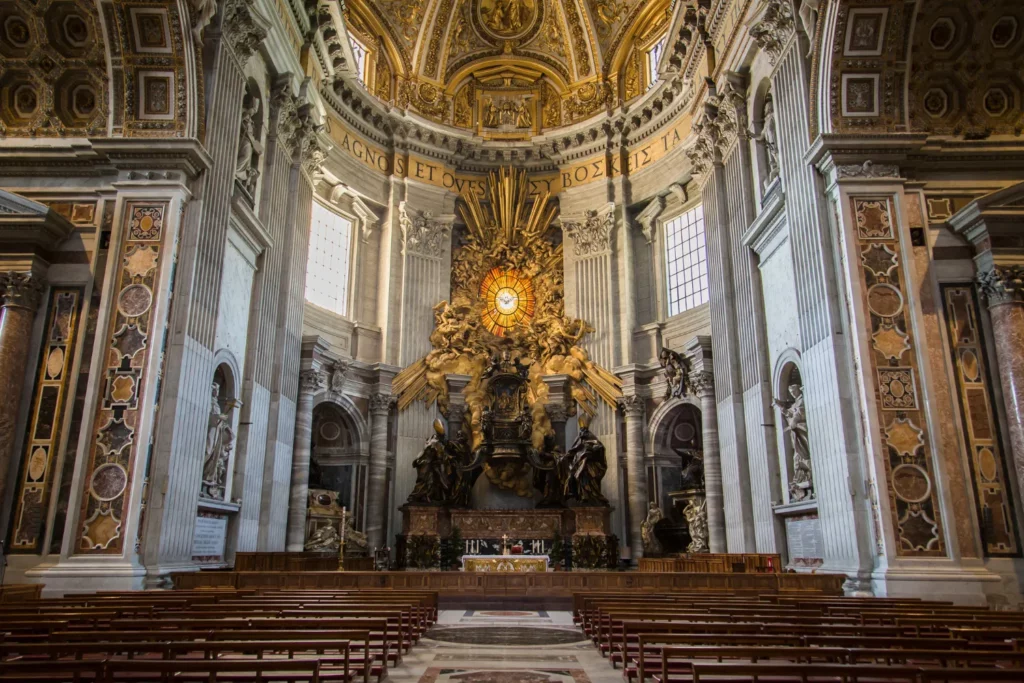
St. Peter’s Cathedral is in the northern part of Rome. It dates back to the 16th and 18th centuries and is where St. Peter was buried.
It contains a collection of beautiful and rare pieces of art. The cathedral is characterised by huge bronze doors and a high dome that reaches 119 metres in length and can host around 60,000 people due to its vast size.
You can look at the dome structure from the inside and enjoy its beautiful views of St. Peter’s Square. A crypt under the church includes many tombs housing symbols of the ancient era, with many tours exploring the crypt.
Saint Peter’s Square
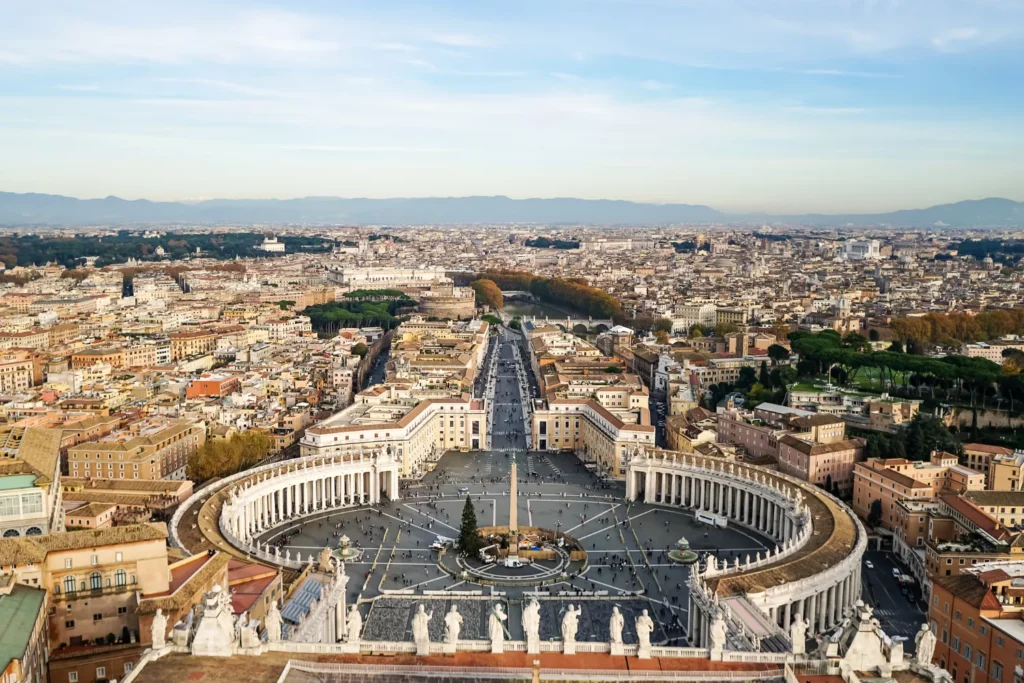
Saint Peter’s Square is in front of St. Peter’s Basilica, dating back to 1667. It can accommodate nearly 200,000 people who gather inside it on important and momentous occasions.
The square extends over an area of 372 metres and is decorated with 140 statues of saints. There are fountains on both sides and in the centre. There is also an Egyptian obelisk that was moved to the square in 1586.
Vatican Library
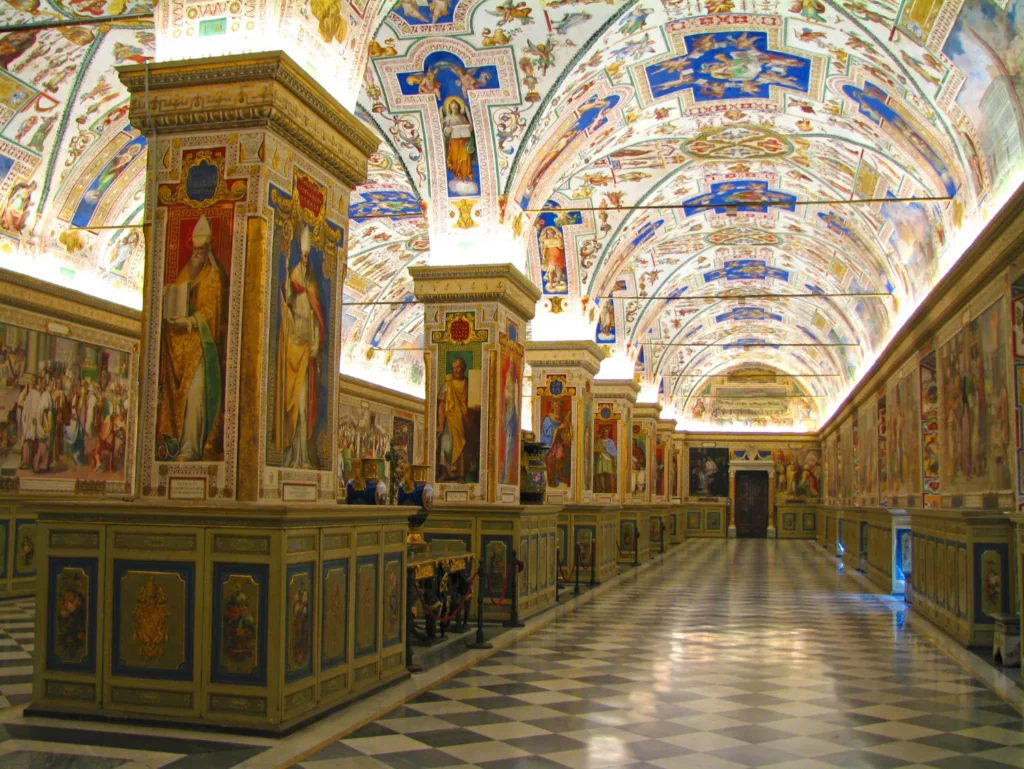
Vatican Library is one of the wealthiest libraries in the world. It contains many important and rare historical manuscripts dating back to 1475, 7,000 of which date back to 1501 alone. There are also 25,000 handwritten books dating back to the Middle Ages and a total of 80,000 manuscripts collected since the library was informally founded in 1450.
Sistine Chapel
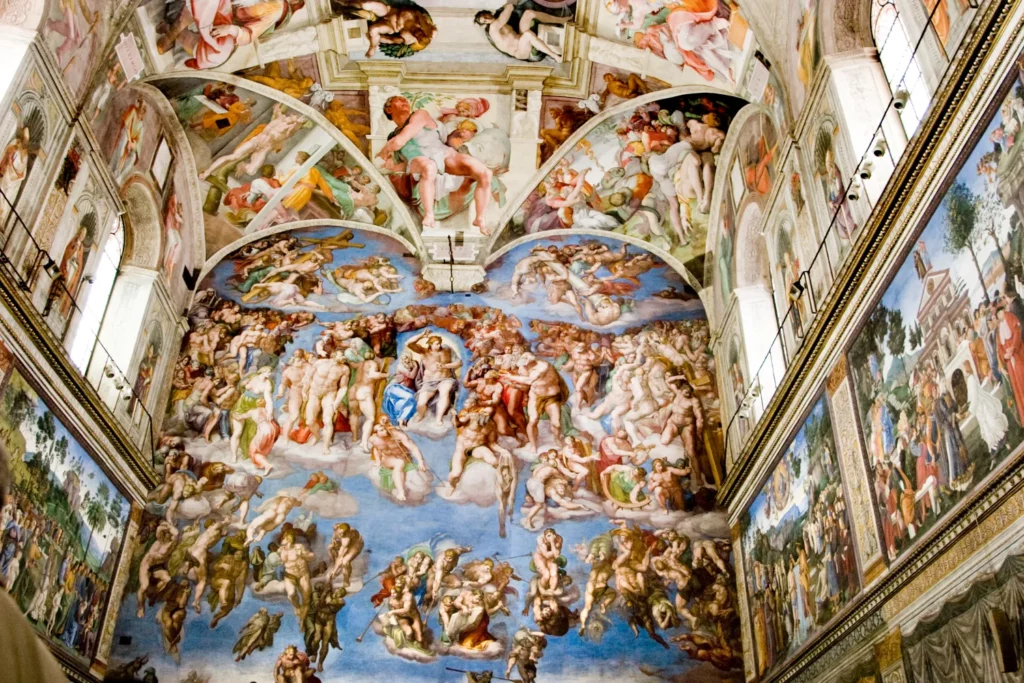
The Sistine Chapel is a Catholic chapel built in 1473 and was ready to open on 15 August 1483. Its unmatched Renaissance architecture distinguishes it from other monuments. The chapel was restored from 1980 to 1994 and is filled with beautiful artistic murals, the most notable of which is its ceiling which Michelangelo famously painted.
The Sistine Chapel now serves as the official residence of the Pope inside Vatican City and is used for special occasions.
Gregorian Egyptian Museum
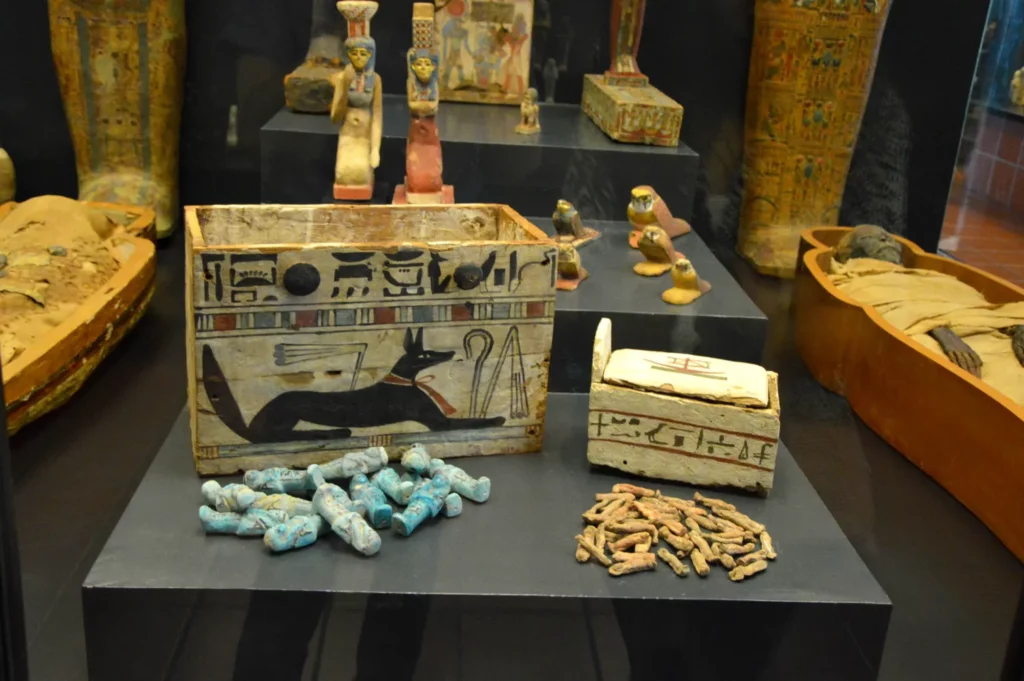
Gregorian Egyptian Museum in Vatican City was re-established in 1839 by Pope Gregory XVI. Much of the museum’s collection was brought from Villa Adriana at Tivoli, where they were collected and owned by Emperor Hadrian.
The museum contains nine rooms showcasing a collection of beautiful Egyptian art from the 6th millennium BC to the 6th century BC, like wooden coffins, statues of pharaonic gods, inscriptions, ancient Egyptian writings, and much more.
There, you will also find an art collection dating back to ancient Mesopotamia, in addition to vases and bronzes from Syria and the Assyrian palaces.
Chiaramonti Museum
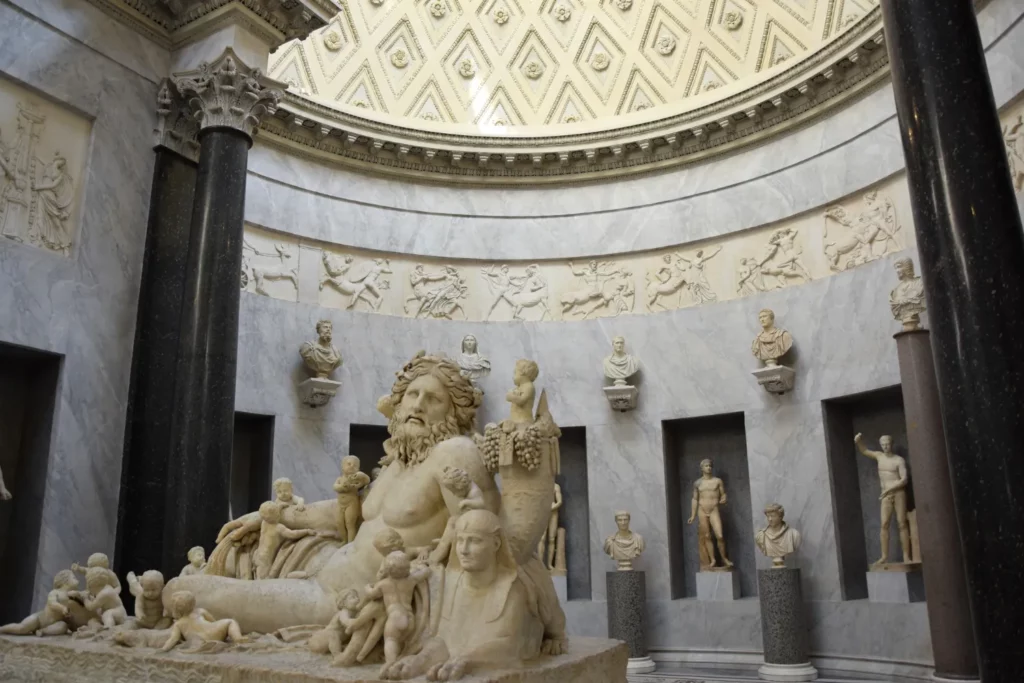
Pope Pius VII founded Chiaramonti Museum in the 19th century, and it focuses on works of Greek and Roman art. Tourists will enjoy seeing a group of the most beautiful imperial statues and another group of sculptures dating back to various and different eras of Greek history.
Cappella Niccolina
Cappella Niccolina is a small chapel located in the Vatican Palace. The chapel has a small entrance built to be a chapel for Pope Nicholas V. It is adorned with impressive lavish frescoes painted by the genius artist Fra Angelico and his assistants.
Vatican Necropolis
The Vatican Necropolis is where previous popes have been buried in private chapels and the accompanying 12th-century chapel. There are also monuments, including stone arches and pediments dating back to the 5th century. The most significant is a tomb believed to contain the remains of St. Peter, a relic that the Vatican continues to excavate with great care.
Pinacoteca
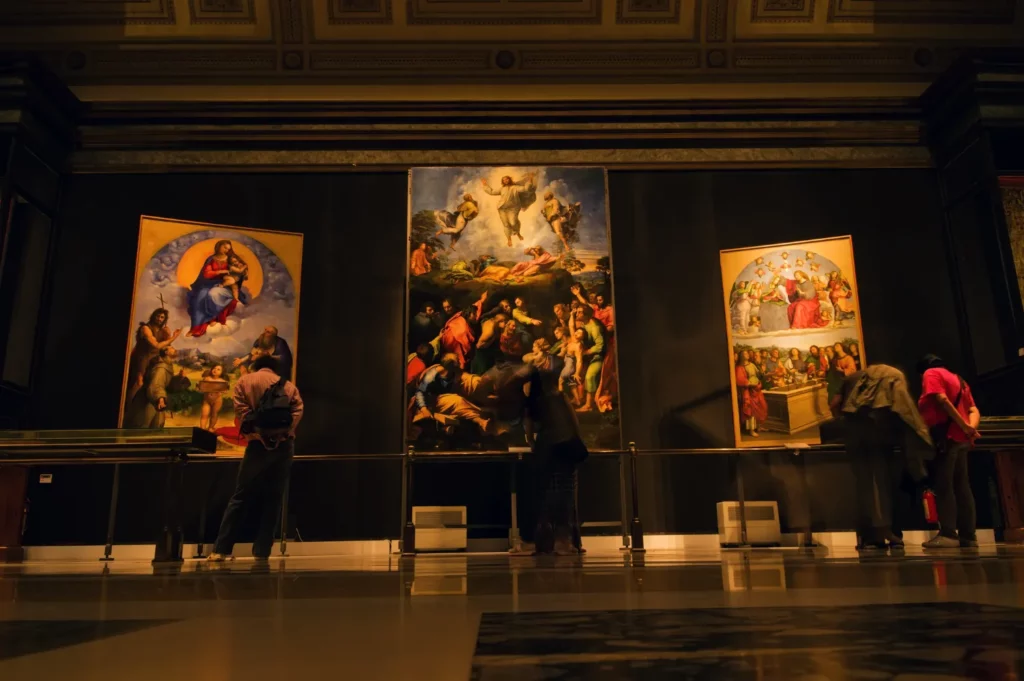
Although many of the treasures of this gallery were stolen by Napoleon, it now contains 16 diverse art rooms featuring priceless treasures from the Byzantine Middle Ages to contemporary artworks.
The pictures there give an insight into the development of Western painting. You will find a wonderful assortment of paintings and exhibits by some of the most renowned artists of ancient and modern times.
Momo Staircase
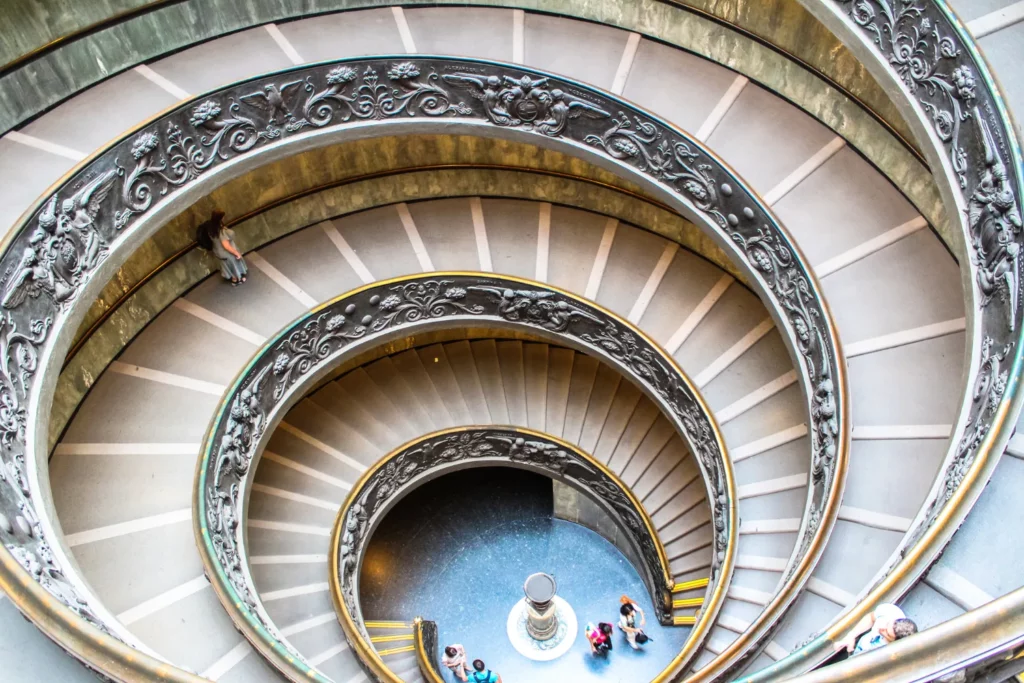
The Momo Staircase, or Bramante Staircase, is located in the Vatican Museums and was designed by Giuseppe Momo in 1932. If you climb this large spiral ramp, you will move from the street to the floor of the Vatican Museum, one of the world’s most important museums.
The staircase forms a double helix consisting of two interlocking spirals; one leads down, the other up. The stairs are beautifully and attractively decorated.
Saint Martha’s House
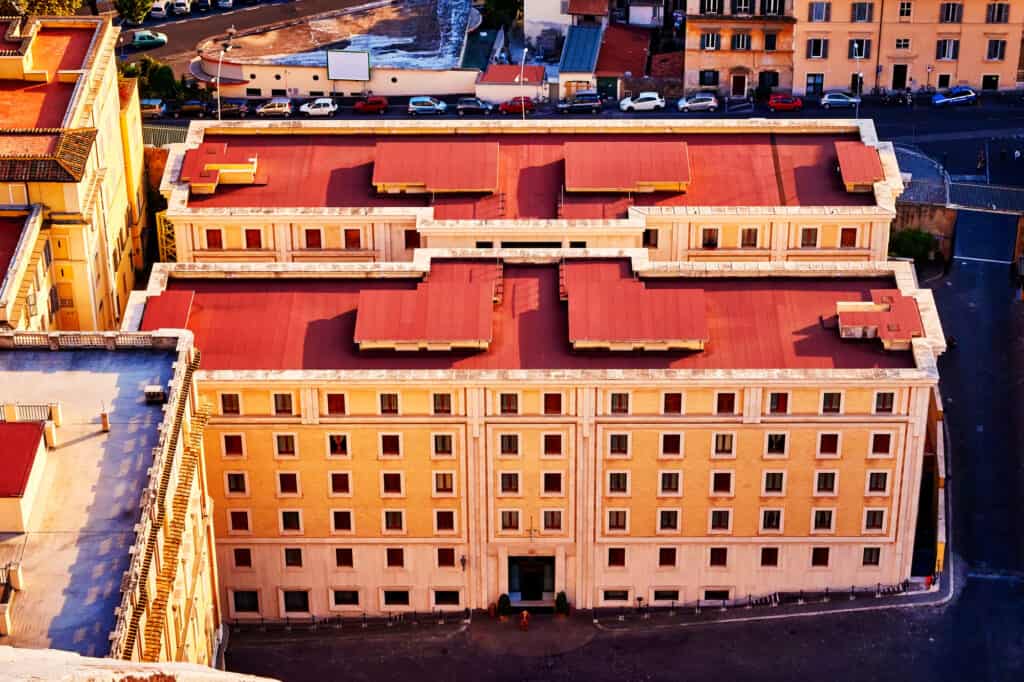
Saint Martha’s House is located south of St. Peter’s Basilica, named after Martha of Bethany. The building is a guest house for clergy members, and Pope Francis has lived there since his election in 2013.
The house consists of two adjoining five-story buildings with a modern chapel, a large dining room, a library, a conference room, 106 junior suites, 22 single rooms, and a large state apartment.
Vatican Gardens
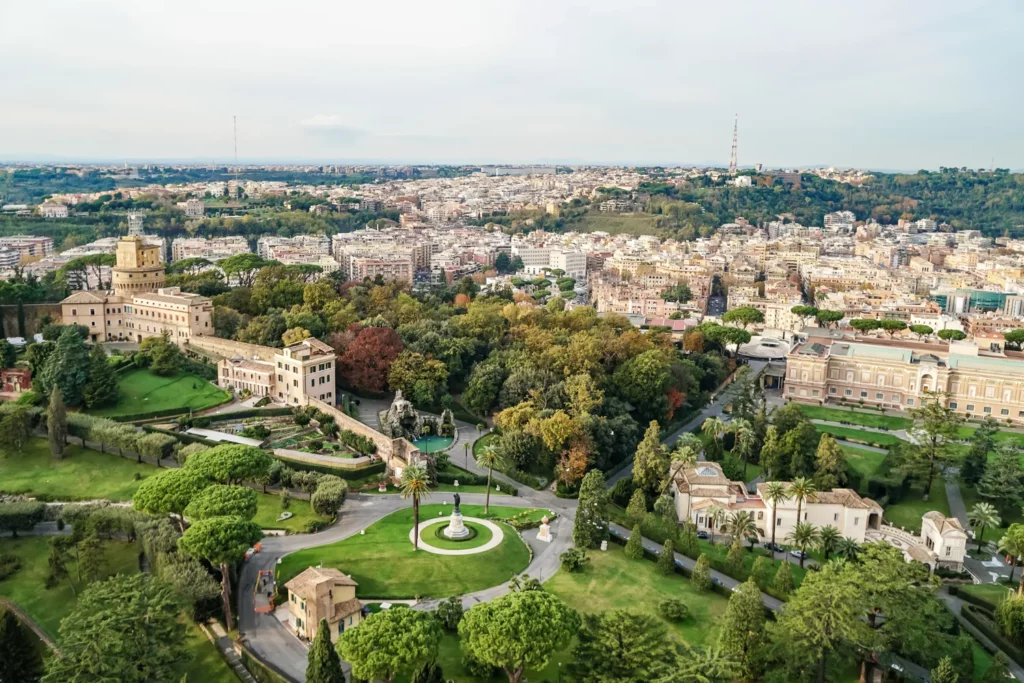
If you are a fan of picturesque nature, you should visit the Vatican Gardens, which enjoy a privileged location northwest of St. Peter’s Basilica and the Apostolic Palace.
The gardens also include a group of picturesque fountains, the most famous ones are the Eagle Fountain and the Fountain of the Blessed Sacrament, in addition to containing a group of shrines.
Apostolic Palace
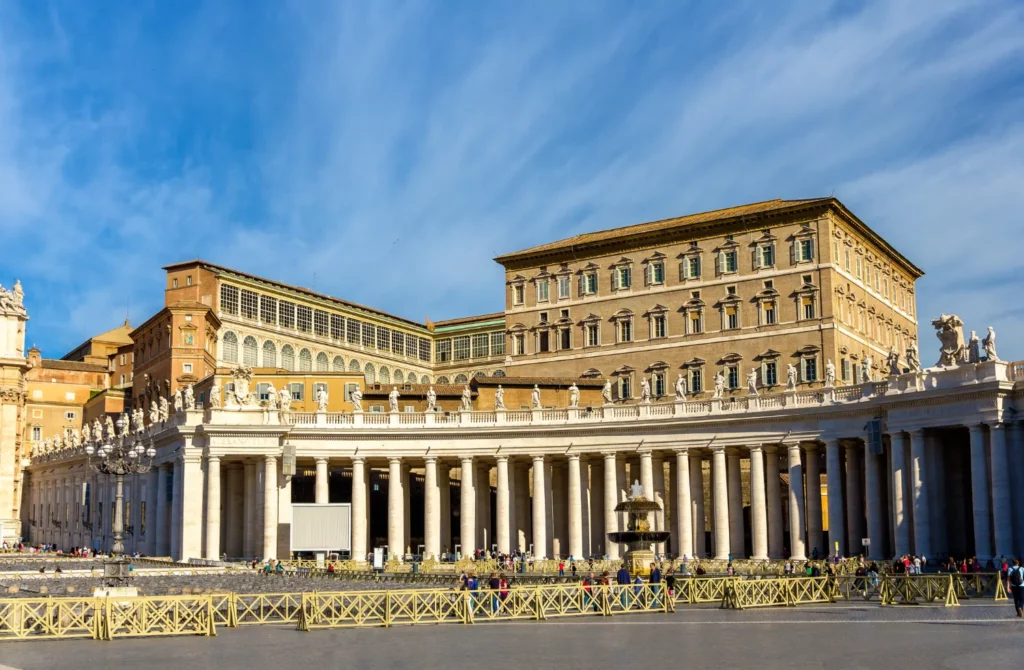
The Apostolic Palace is the official residence of the reigning Pope and is located northeast of St. Peter’s Basilica. However, Pope Francis prefers to stay at Saint Martha’s House.
Despite the palace’s name, it is also used for administrative functions. Many administrative offices within the palace are used to manage the government functions of the Vatican State.
The palace also has many outstanding features, as it has become one of the best tourist attractions in this city and contains many beautiful gardens, aquariums, museums, and natural institutes inside it.
The Vatican is a country with a rich religious history that inspires all the history buffs out there. As you’re planning your trip around the country, make sure to include the most famous attractions in Rome to indulge in Italian history fully.



